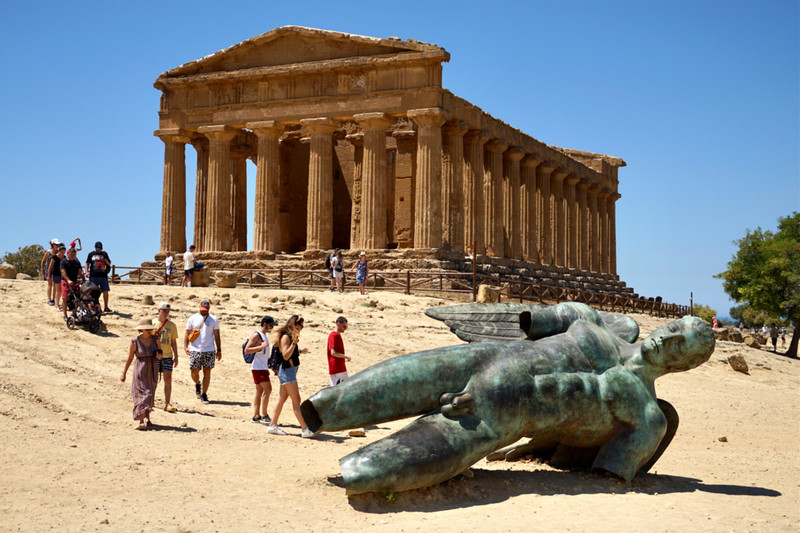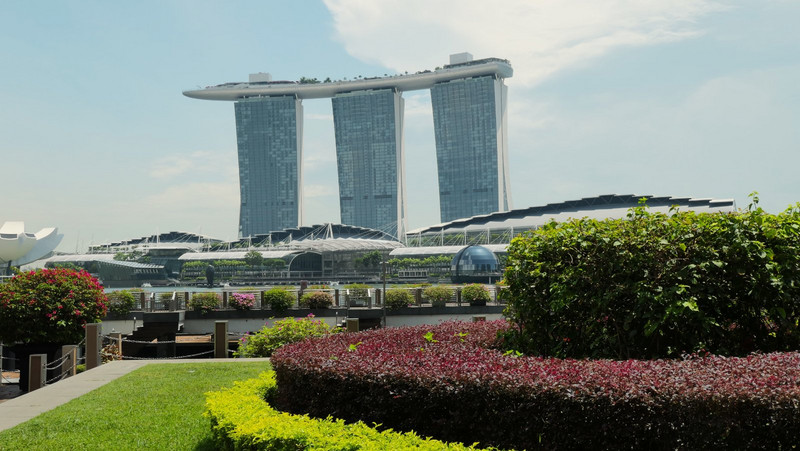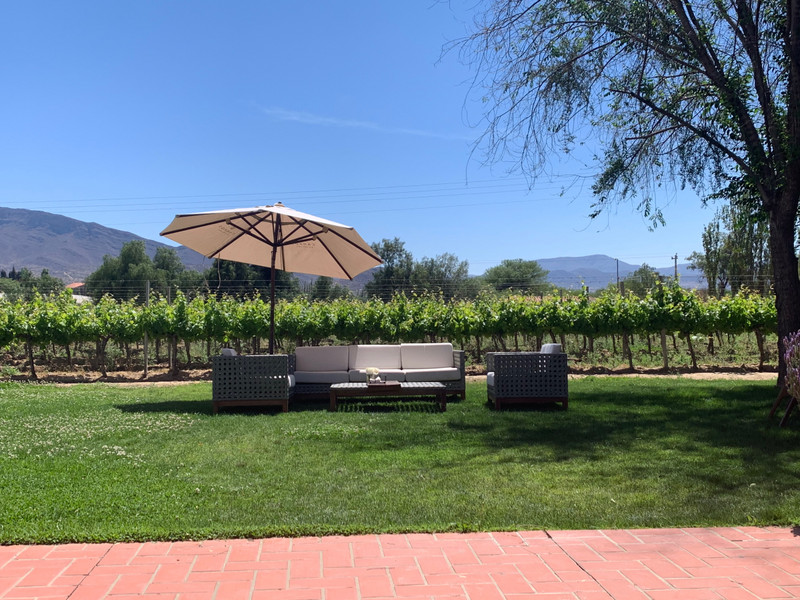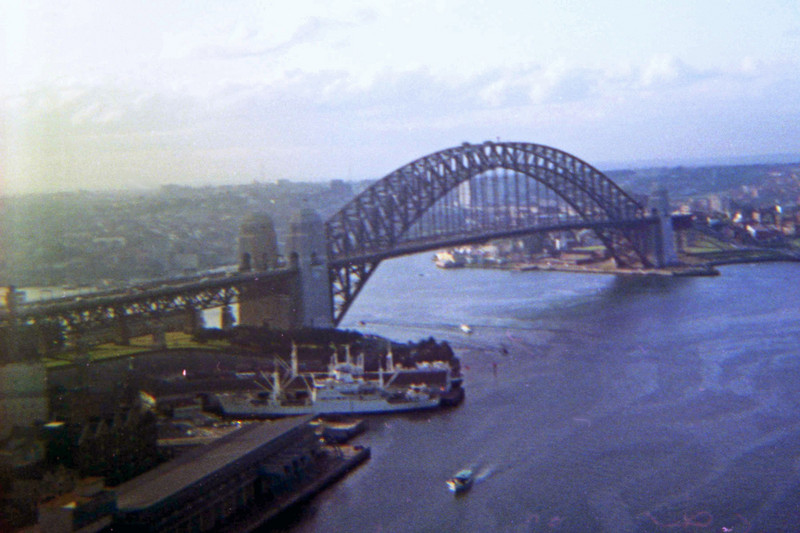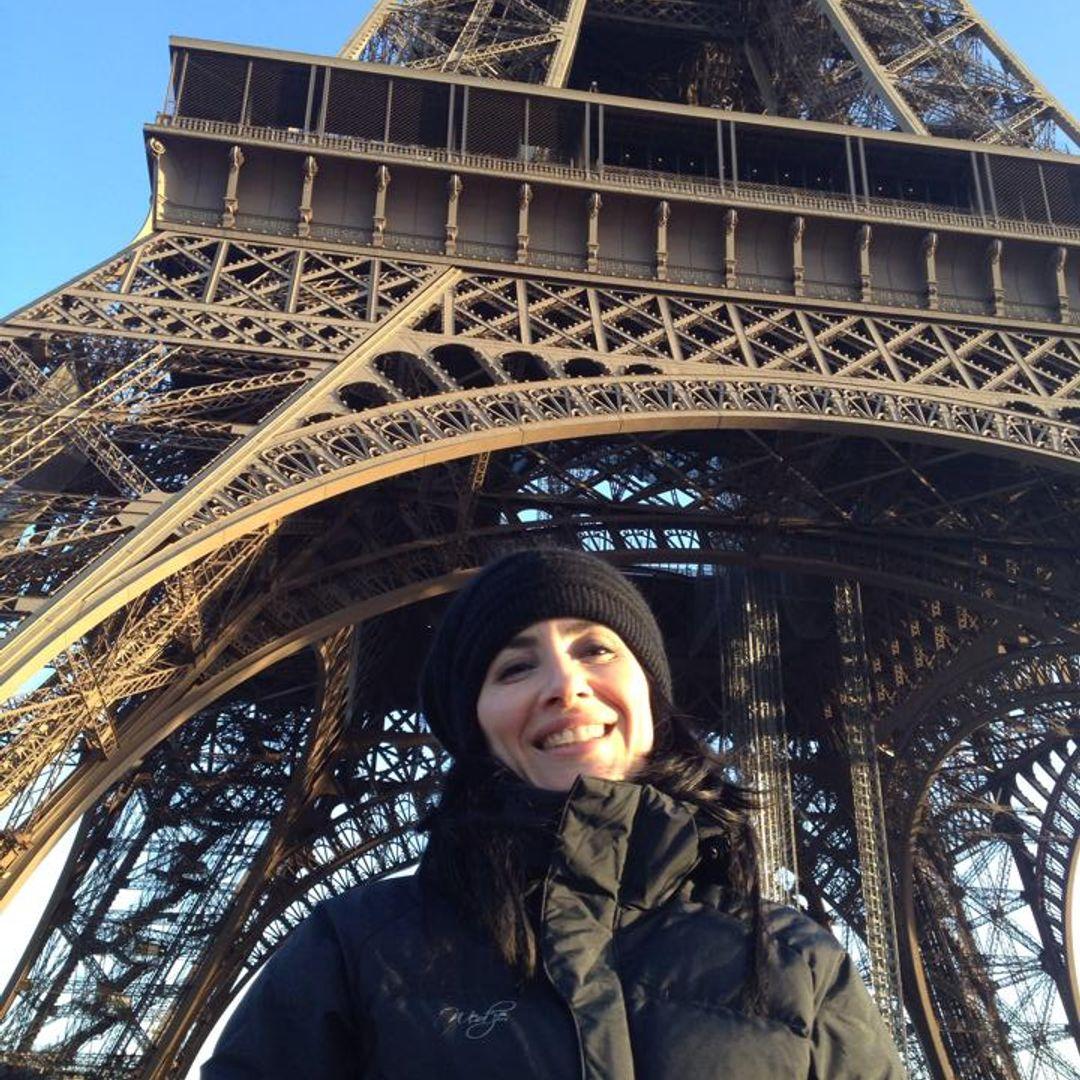Today Ive booked a full day tour to the Valley of the Temples and Scala dei Turchi, both of which are about two hours away near the town of Agrigento on Sicilys south coast. They do things a bit differently here in Sicily. Issy never had any intention of doing the tour but when I tried to book for one person I was told it was sold out, but if I booked for two, well no problem..?
Its an early start so I try very hard to leave Issy in dreamland, forgetting of course that shes got no chance of sleeping through the earth shattering shooting of the traditional nine blanks at the bright and early time of 9am.
I was expecting the cross island road to be a goat track, but no, as we remember from our previous visit to Sicily most of the roads here are excellent. This is no exception, most of it‘s a four lane highway, much of it on massive viaducts above a river valley. The landscape looks a bit parched and brown, but theres no shortage of agricultural activity - grape vines, olives and vegetables, and even some sheep and cattle trying to
Were told that the Valley of the Temples contains the remains of seven Greek temples dating from the fifth century BC. The best preserved is the Temple of Concordia, which is also widely recognised as one of the best preserved Greek temples in the whole of Europe. This all came about as a result of the fifth century BC Greeks being keen to expand their empire. Our guide tells us that this particular part of Sicily came to their notice when they were cruising by one day and happened to notice the area was covered in crap. well thats what I thought she said. I would have picked ancient Greeks as being a bit more discerning than that, and so they were; she soon clarifies that it was crustaceans that took their fancy, crabs. I think I need to get my ears cleaned out.
The Greeks and the Carthaginians were involved in various scuffles over Sicily over the ensuing centuries. The Carthaginians won control of the island at one stage, and decided they didnt like temples, so went about destroying some of them. The site is spectacular, and extends for several
kilometres. One downside is the backdrop to all of this, a lot of which is industrial chimneys and the ugly modern day apartment blocks of present day Agrigento. It seems a pity that the Carthaginians didnt hang around for a few millenia, preserve the Greek temples, and save their destructive urges for the chimneys and apartment blocks.
I think it would suck to be a tour guide. There are nearly forty people in our group, and keeping them together on a massive site packed with visitors is like herding cats. As per usual there are some problem children, in this case the French group, and the young couple. Our guide would like to be spending her time educating us, but the phrases were hearing through our headsets are if anyone‘s seen the French group or the young couple could you please let me know. And its hot, stinking hot. The Red Cross is here in force armed with water bottles and first aid kits, and a few visitors do indeed look like they might be about to melt into the bitumen. At least these young first aiders look like they might be capable of rendering assistance; the
Red Cross contingent we saw in Cefalu a few days two seventy year old blokes on dodgy looking red vespers, and they looked far more likely to be the ones needing the assistance than handing it out.
So its back on the bus for our next and final stop, the Scala dei Turchi. But first we pass a road sign that just says Caos. This has got to be a surely, but no, thats the name of the village, and very organised it looks too.
The Scala dei Turchi, or Stair of the Turks (apparently some reference to medieval pirate raids) is a virtually pure white stepped seaside cliff made of the sedimentary rock marl. It looks pretty spectacular. But before venturing down there I dine on shrimps asleep in dressing at a restaurant on the clifftop; I hope they dont wake up while Im eating them.
